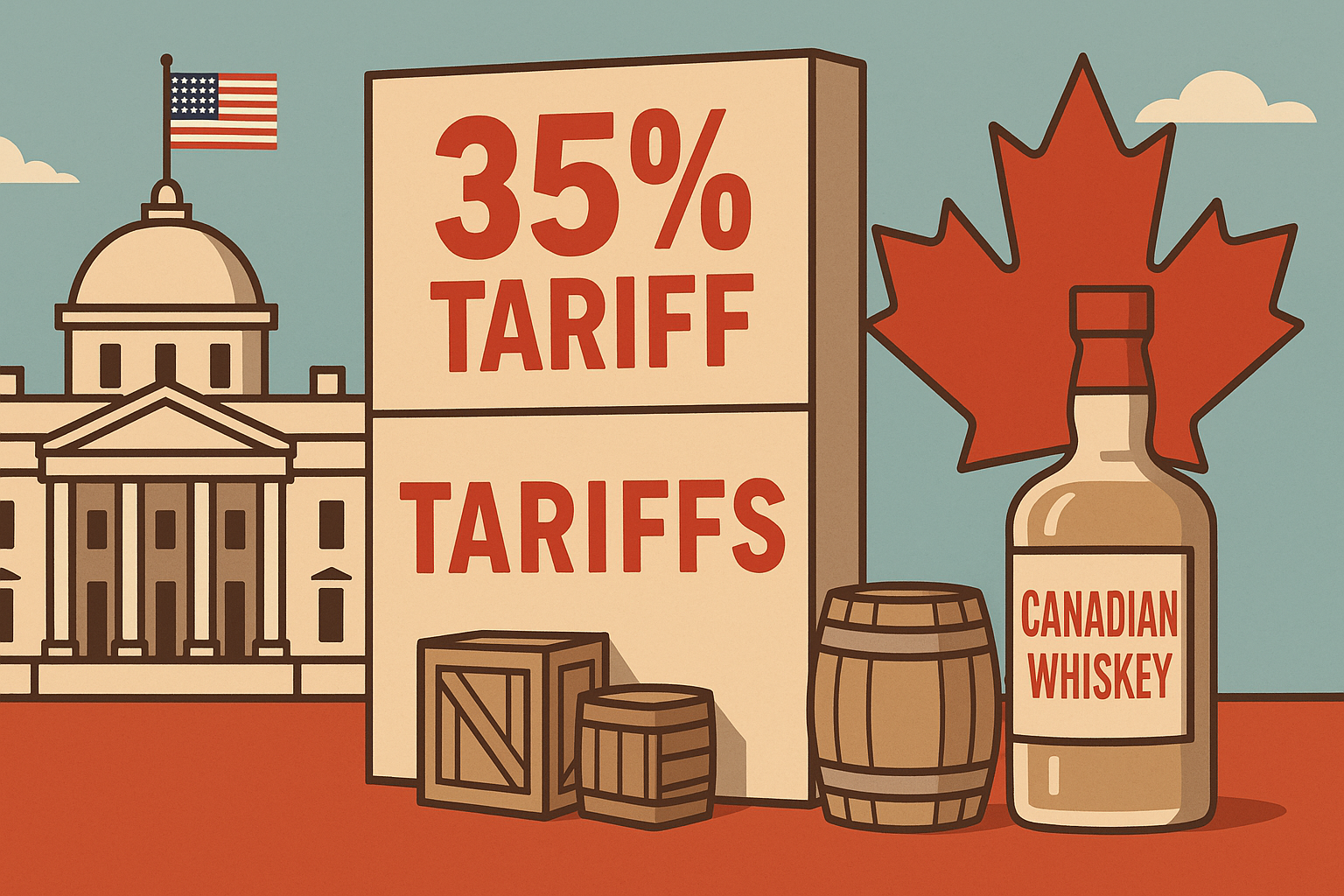Well, here we go again. President Trump has decided that the neighborly relationship with our friends up north needed another stress test, signing an executive order that jacks up tariffs on Canadian goods from 25% to 35%. Mark your calendars for August 1st—that's when your Canadian whiskey is getting pricier.
The White House is calling this a response to "Canada's continued inaction and retaliation" and—I kid you not—an "existing emergency." Because apparently maple syrup imports represent a clear and present danger to national security.
I've covered trade wars since Trump's first term, and there's something almost rhythmic about how these things unfold. First comes the surprise announcement. Then the market jitters. Then the inevitable head-scratching about what problem we're actually solving.
The timing here is particularly odd. Markets were just starting to settle after the last round of trade tensions when Trump decided to toss this economic grenade. It's like interrupting someone mid-sentence to tell them their house is on fire—even if you have something important to say, the delivery matters.
What's frustrating (for economists and businesses alike) is how these tariffs function in practice. They're supposed to protect American industries, but they often operate as stealth taxes on U.S. consumers and manufacturers who rely on Canadian inputs.
Think about it. Construction materials. Auto parts. Energy products. All suddenly more expensive, overnight.
Remember the 2018-2019 steel and aluminum tariff episode? I do. I interviewed dozens of metal-using manufacturers who were absolutely hammered by higher costs. Many delayed expansions. Some cut jobs. Meanwhile, the "protected" industries saw gains that evaporated once our trading partners hit back with their own tariffs. Classic economic whack-a-mole.
(And don't get me started on the bureaucratic nightmare of applying for tariff exemptions. I spoke with one Ohio manufacturer who hired a full-time employee just to handle the paperwork.)
Now Trudeau faces the classic dilemma that these situations create: hit back and risk escalation, or take the hit and look weak domestically? The Canadian dollar has already weakened on the news—some cushion for their exporters, but hardly a solution.
What's particularly maddening is the vague reference to "continued inaction." Inaction on what? Trade terms? Dairy quotas? Not apologizing with sufficient enthusiasm when they bump into us at the UN?
Look, we need to be honest about what's happening. This isn't economic strategy—it's performance art with tariffs. The actual financial benefits are dubious at best, but boy does it send a message: "I'm tough on trade! America first!"
Markets reacted with their trademark combination of initial panic followed by cool calculation. The S&P dipped, then recovered as traders realized that while inconvenient for certain sectors, a 10% tariff increase on Canadian goods isn't exactly financial Armageddon.
But for companies caught in the crossfire? Pure chaos. They're now scrambling to decide whether to eat the costs, pass them to consumers, or reorganize their supply chains. None of these options are good... which I suppose is the point of tariffs—making the status quo painful enough that something changes.
Whether that "something" actually benefits either economy is... well, let's just say I wouldn't bet my 401(k) on it.
The costs of this economic poker game will ultimately be paid not just in corporate boardrooms but at cash registers on both sides of what used to be called the world's longest undefended border.
Which seems—and I'm choosing my words carefully here—counterproductive.
